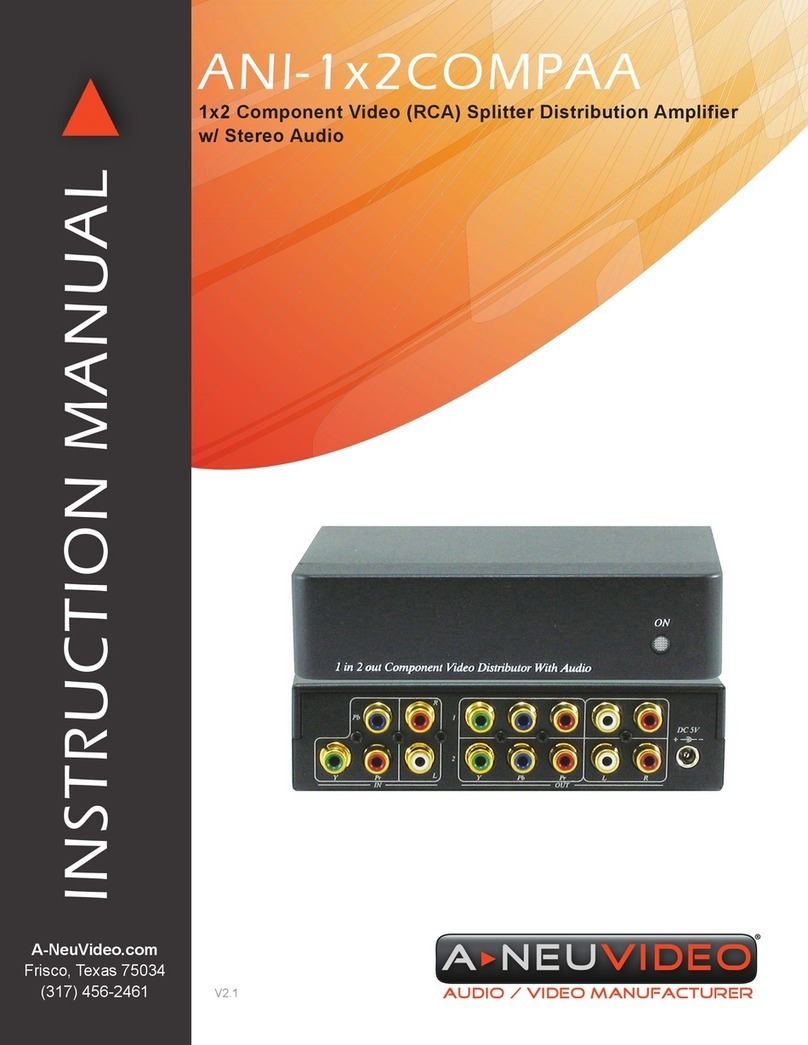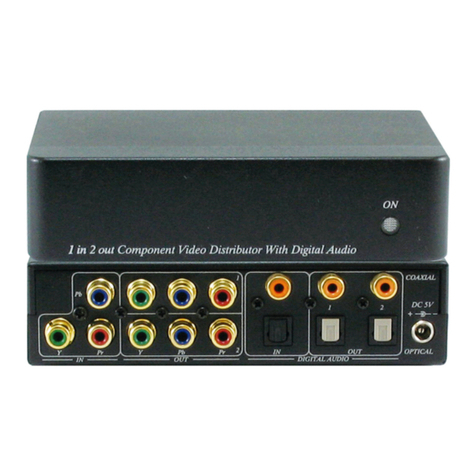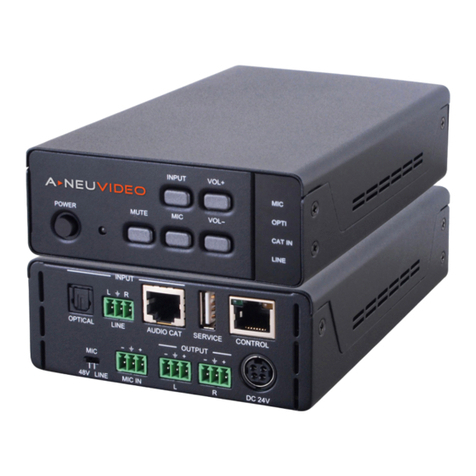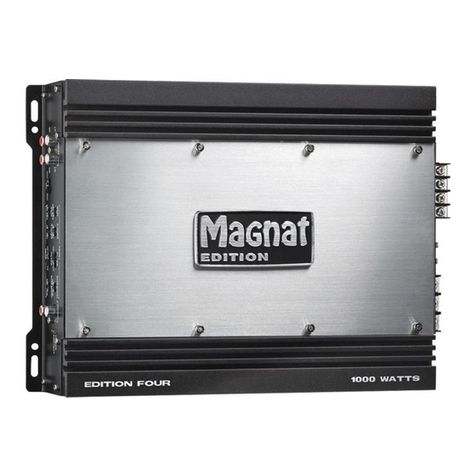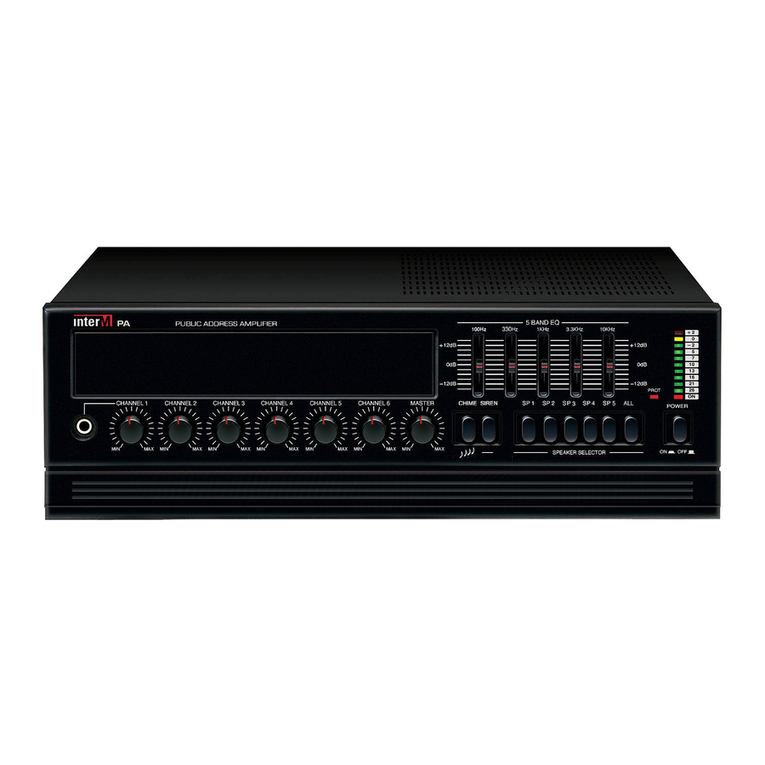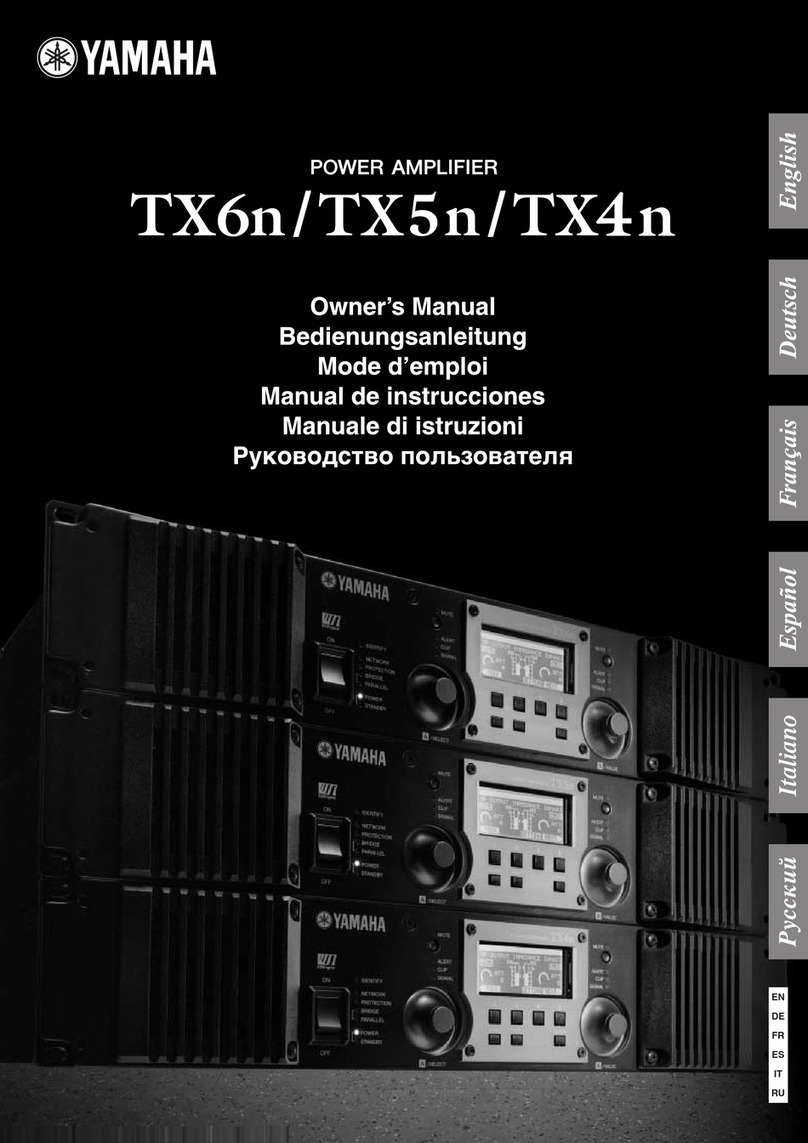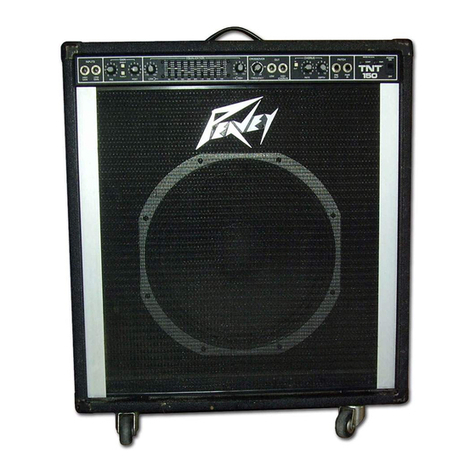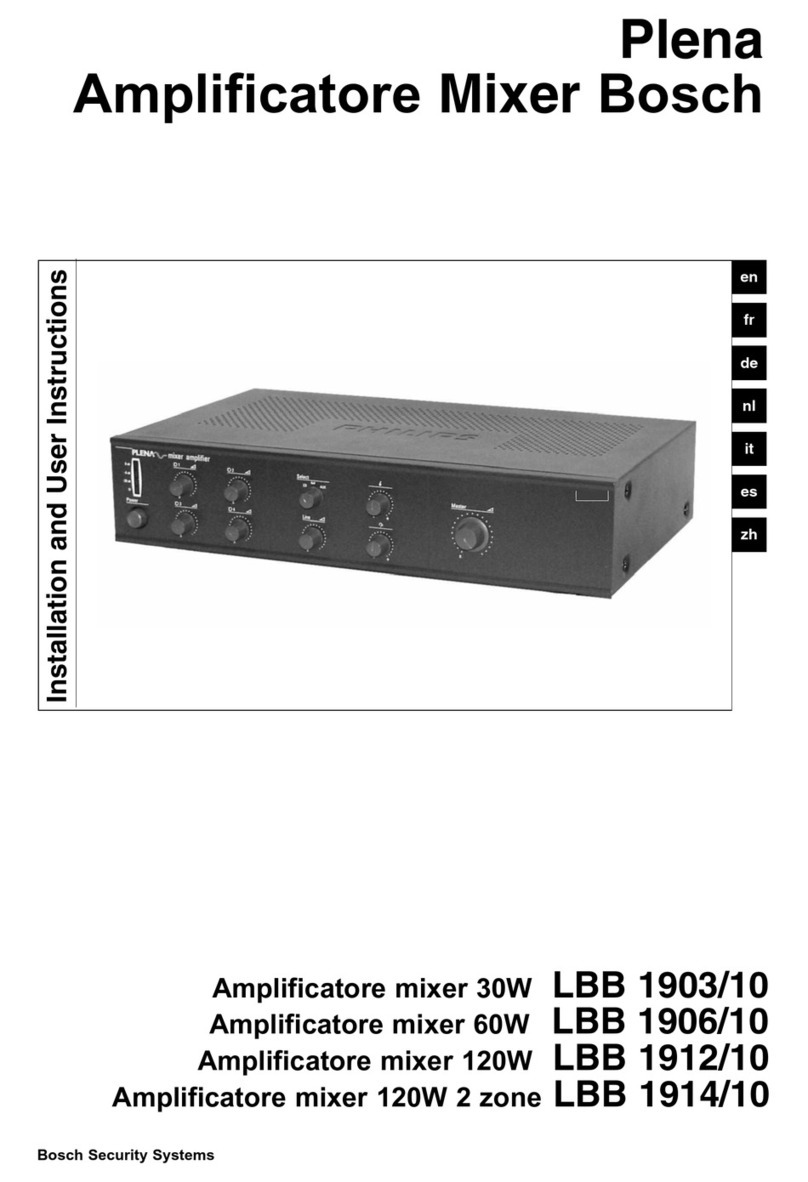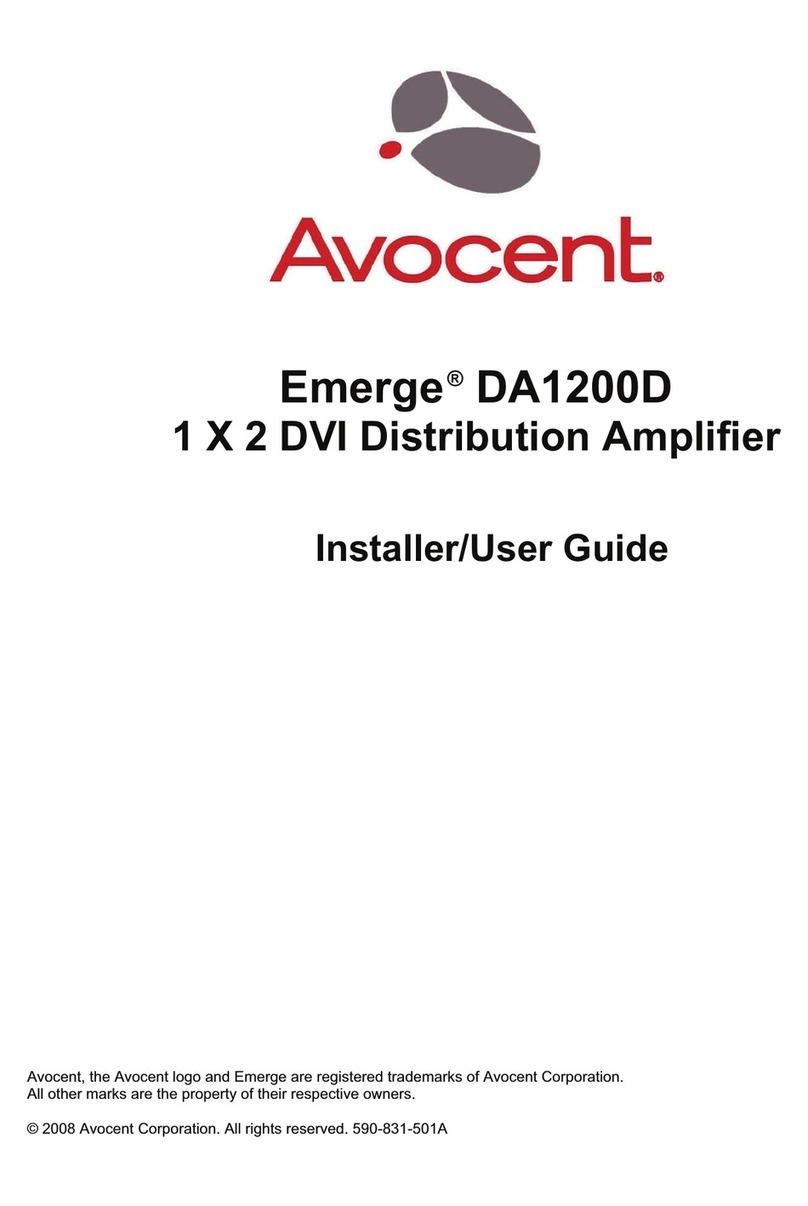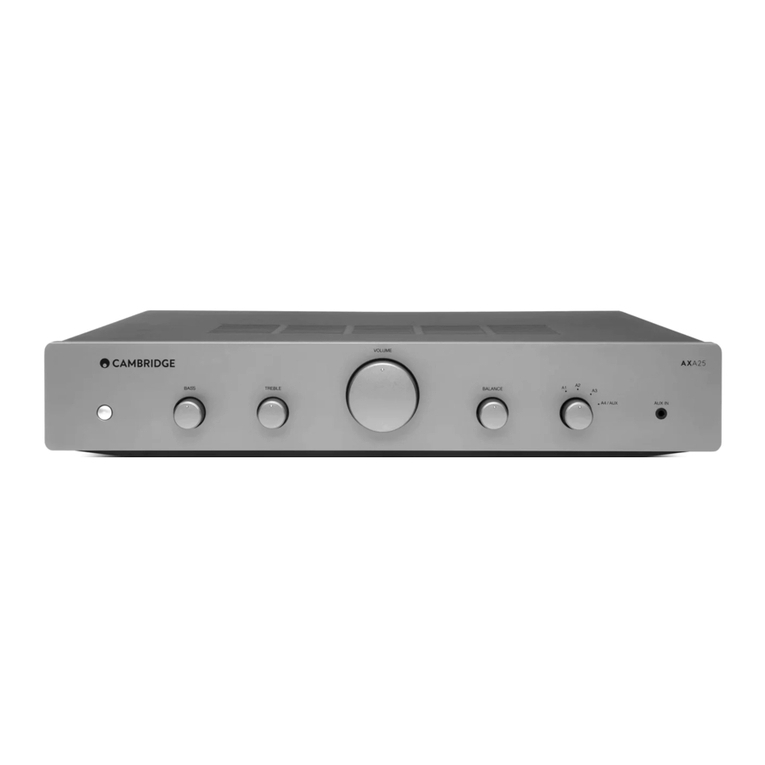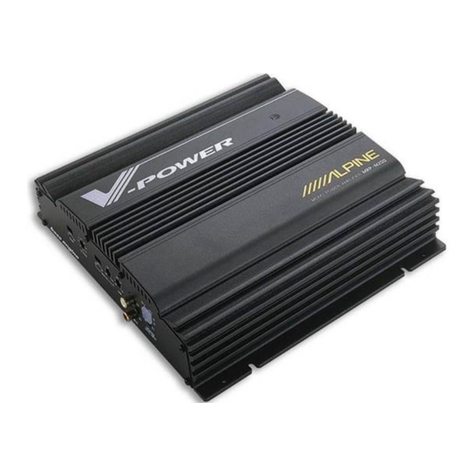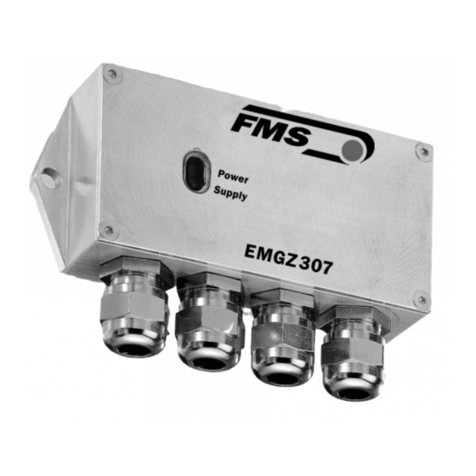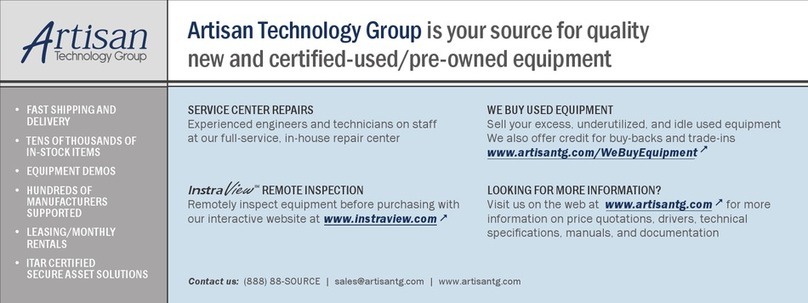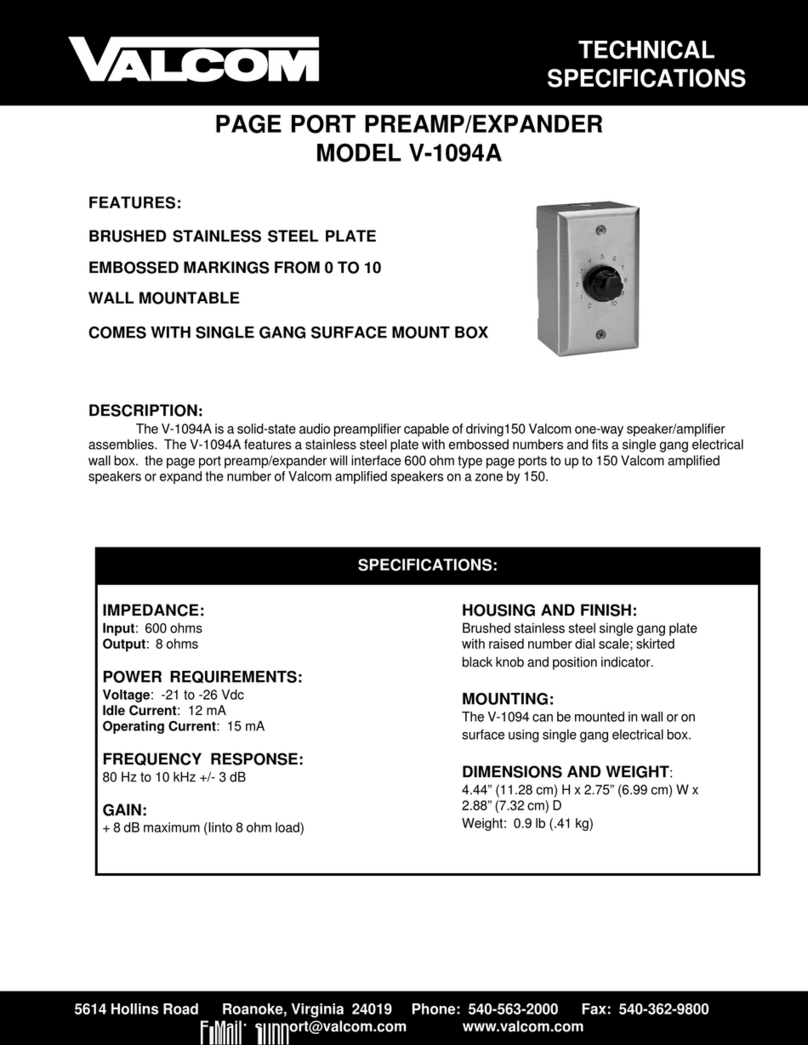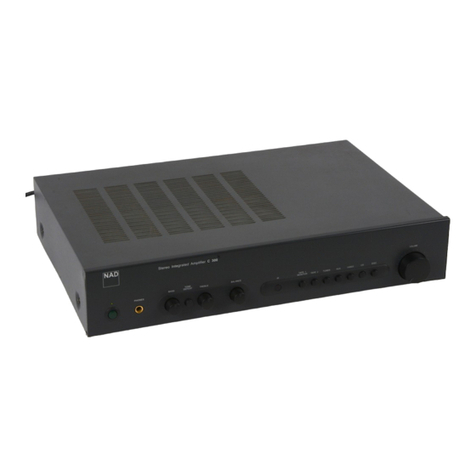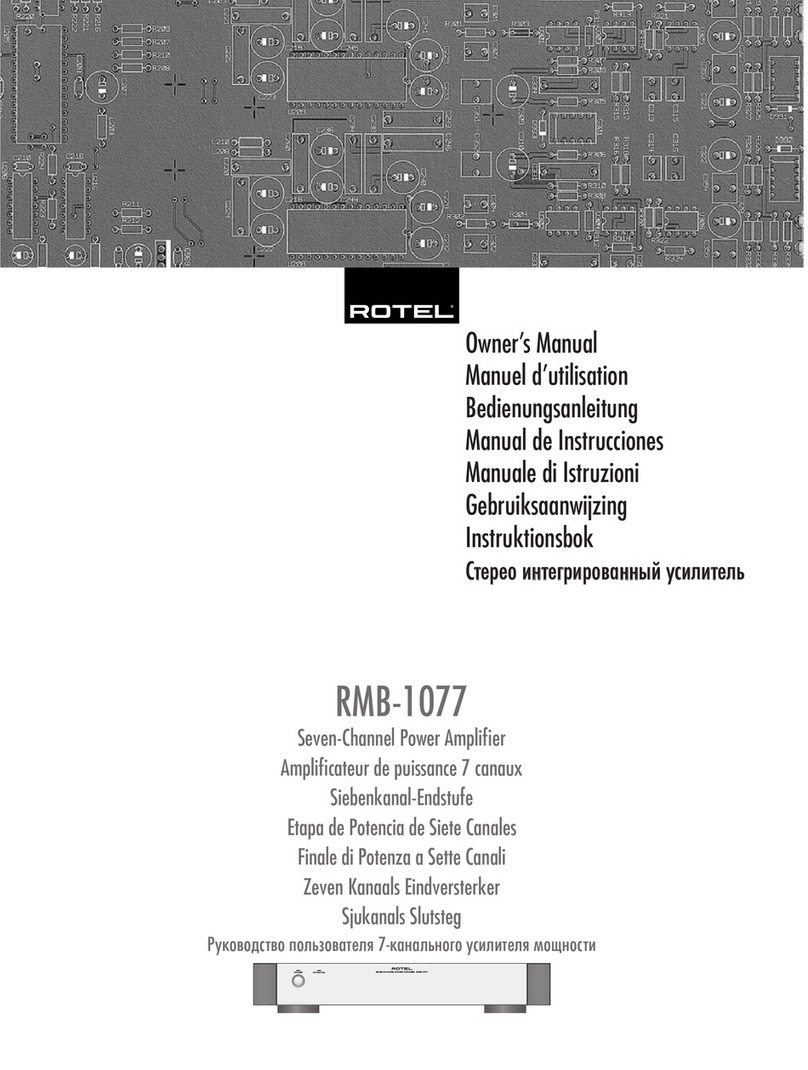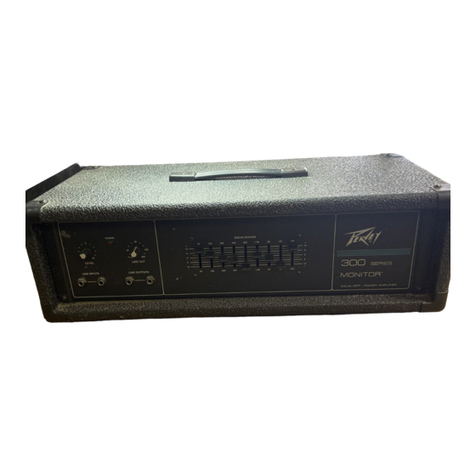A-Neuvideo ANI-PA User manual

AUDIO / VIDEO MANUFACTURER
ANI-PA
Mini Digital Amplifier with EQ/Mixer
V3.0
INSTRUCTION MANUAL
A-NeuVideo.com
Frisco, Texas 75034
(317) 456-2461

SAFETY INFORMATION
1. To ensure the best results from this product, please read this manual and all other documentation before operating your equipment.
Retain all documentation for future reference.
2. Follow all instructions printed on unit chassis for proper operation.
3. To reduce the risk of re, do not spill water or other liquids into or on the unit, or operate the unit while standing in liquid.
4. Make sure power outlets conform to the power requirements listed on the back of the unit. Keep unit protected from rain, water and
excessive moisture.
5. Do not attempt to clean the unit with chemical solvents or aerosol cleaners, as this may damage the unit. Dust with a clean dry cloth.
6. Do not use the unit if the electrical power cord is frayed or broken. The power supply cords should be routed so that they are not
likely to be walked on or pinched by items placed upon or against them, paying particular attention to cords and plugs, convenience
receptacles, and the point where they exit from the appliance.
7. Do not force switched or external connections in any way. They should all connect easily, without needing to be forced.
8. Always operate the unit with the AC ground wire connected to the electrical system ground. Precautions should be taken so that the
means of grounding of a piece of equipment is not defeated.
9. AC voltage must be correct and the same as that printed on the rear of the unit. Damage caused by connection to improper AC
voltage is not covered by any warranty.
10. Turn power off and disconnect unit from AC current before making connections.
11. Never hold a power switch in the “ON” position.
12. This unit should be installed in a cool dry place, away from sources of excessive heat, vibration, dust, moisture and cold. Do not use
the unit near stoves, heat registers, radiators, or other heat producing devices.
13. Do not block fan intake or exhaust ports. Do not operate equipment on a surface or in an environment which may impede the normal
ow of air around the unit, such as a bed, rug, carpet, or completely enclosed rack. If the unit is used in an extremely dusty or smoky
environment, the unit should be periodically “blown free” of foreign dust and matter.
14. To reduce the risk of electric shock, do not remove the cover. There are no user serviceable parts inside. Refer all servicing to
qualied service personnel. There are no user serviceable parts inside.
15. When moving the unit, disconnect input ports rst, then remove the power cable; nally, disconnect the interconnecting cables to
other devices.
16. Do not drive the inputs with a signal level greater than that required to drive equipment to full output.
17. The equipment power cord should be unplugged from the outlet when left unused for a long period of time.
18. Save the carton and packing material even if the equipment has arrived in good condition. Should you ever need to ship the unit,
use only the original factory packing.
19. Service Information Equipment should be serviced by qualier service personnel when:
A. The power supply cord or the plug has been damaged.
B. Objects have fallen, or liquid has been spilled into the equipment.
C. The equipment has been exposed to rain
D. The equipment does not appear to operate normally, or exhibits a marked change in performance
E. The equipment has been dropped, or the enclosure damaged.
THIS SAFETY INFORMATION IS OF A GENERAL NATURE AND MAY BE SUPERSEDED BY INSTRUCTIONS CONTAINED WITHIN THIS MANUAL

TABLE OF CONTENTS
ANEUVIDEO
1
CONTENTS
INTRODUCTION & CONTENTS ...................................................1
FEATURES....................................................................................2
SPECIFICATION............................................................................2
AUDIO CONNECTION ..................................................................4
BUTTONS CONTROL ...................................................................6
RS-232 CABLE PINS USED .........................................................7
RS-232 COMMUNICATION PROTOCOL ......................................8
SYSTEM DIAGRAM/ PANEL DRAWING .......................................9
Dear Customer
Thank you for purchasing this product. For optimum performance
and safety, please read these instructions carefully before
connecting, operating or adjusting this product. Please keep this
manual for future reference.
INTRODUCTION
ANI-PA is a compact-size digital amplier (Class-D) with (3) inputs
(2 line level and 1 MIC). It is integrated with many useful functions,
including volume control, bridge connection to additional ANI-PA’s,
dual-mono, EQ control, microphone mixer, etc.
It is designed for use in many different applications, including
classrooms, small meeting rooms, lecture halls, bars, etc.
PACKAGE CONTENTS
Before attempting to use this unit, please check the packaging and
make sure the following items are contained in the shipping carton:
• ANI-PA Amplier
• Users Guide
• AC Power Cord (North America)
Optional: ANI-PAIR
SAFETY PRECAUTIONS
Please read all instructions before attempting to unpack, install or
operate this equipment and before connecting the power supply.
Please keep the following in mind as you unpack and install this
equipment:
• Always follow basic safety precautions to reduce the risk of re,
electrical shock and injury to persons.
• To prevent re or shock hazard, do not expose the unit to rain,
moisture or install this product near water.
• Never spill liquid of any kind on or into this product.
• Never push an object of any kind into this product through any
openings or empty slots in the unit, as you may damage parts
inside the unit.
• Do not attach the power supply cabling to building surfaces.
• Use only the supplied power supply unit (PSU). Do not use the
PSU if it is damaged.
• Do not allow anything to rest on the power cabling or allow any
weight to be placed upon it or any person walk on it.
• To protect the unit from overheating, do not block any vents or
openings in the unit housing that provide ventilation and allow for
sufcient space for air to circulate around the unit.
DISCLAIMERS
The information in this manual has been carefully checked and
is believed to be accurate. We assume no responsibility for any
infringements of patents or other rights of third parties which may
result from its use.
We assume no responsibility for any inaccuracies that may be
contained in this document. We make no commitment to update or
to keep current the information contained in this document.
We reserve the right to make improvements to this document and/
or product at any time and without notice.
COPYRIGHT NOTICE
No part of this document may be reproduced, transmitted,
transcribed, stored in a retrieval system, or any of its part translated
into any language or computer le, in any form or by any means
— electronic, mechanical, magnetic, optical, chemical, manual, or
otherwise — without the express written permission and consent.
© Copyright 2015. All Rights Reserved.
Version 3.0 MAY 2015
TRADEMARK ACKNOWLEDGMENTS
All products or service names mentioned in this document may be
trademarks of the companies with which they are associated.

2
FEATURES & SPECIFICATIONS
FEATURES
• (2) stereo audio inputs, switchable by push-button, RS-232 & IR remote (optional).
• Volume/Bass/Treble controllable by push-button, RS-232 & IR remote (optional).
• 2x 20Watt@4Ohm as the default amplier output.
• Line audio output at 3.5mm jack, with volume controllable.
• Bridge connection function. User can switch the ANI-PA to be 1x 40Watt@8Ohm by bridge connection.
• Dual-mono function. User can sum up the stereo audio to two times mono audio.
• MIC mixer function. The microphone will be mixed to the line audio output, and be controlled separately.
• MIC input supports 48V phantom power, dynamic MIC and wireless MIC.
• MIC port can support balance/unbalance signal, suppress the external noise effectively.
• Noise gate function. It keeps detecting the audio and MIC input, will mute the output after 10 seconds when there is no input.
• Ultra low inrush current, no need for power sequencing. This allows multiple ANI-PA to be powered on simultaneously without
overloading power circuits.
• Convection cooled, a fan is not needed.
• Antistatic case design: providing good protection for long-term and stable performance
• LED indicator, for power and working status.
Specifications
• Audio Input: (2) Stereo audio / (1) MIC
• Input Connector: (2) RCA / (1) 3.5mm jack / (1) Captive Screw Connector
• Audio Input Impedance: >10kΩ
• Audio Output: (1) Amplier / (1) Stereo audio
• Output Connector: (1) Captive Screw Connector / (1) 3.5mm jack
• Audio Output Impedance: 50Ω/Stereo, 4~8Ω/Amplier
• Stereo Channel Separation: >75dB@20Hz to 20KHz
• CMRR: >70dB@20Hz~20KHz
• Frequency Response: 20Hz ~ 20KHz
• Audio IBandwidth: 20Hz ~ 25KHz
• SNR: 80dB at maximum output
• THD + Noise: 1%@1KHz, 0.3%@20KHz (at nominal level)
• Voltage Gain: 32dB
• Power Output: 2x 20 Watts (4Ohms)
• RS-232 Control: RS-232, 9-pin female D connector
• PinCongurations:2 = TX, 3 = RX, 5 = GND
• IR Remote: Optional IR remote (part# ANI-PAIR)
NOTE: All nominal levels are at ±10%.
As product improvements are continuous, specications are subject to change without notice.
ANEUVIDEO

3
Audio Connection
Audio Output
Default Output: 2x 20Watt@4 Ohm
The default output of the amplier is 2x 20Watt@4 Ohm, so user can connect the amplier in stereo. As the picture below:
Connecting all four pins.
Bridge Connection: 1x 40Watt@8 Ohm
The ANI-PA has the bridge connection, to double the output power at 1x 40Watt@8 Ohm. It will sum up the input left channel and input
right channel to be mono output, and the power is up to 40Watt.
The bridge connection is:
Connecting only two pins.
Dual-Mono Output:
The ANI-PA also has the function of double-mono output. It can sum up the left and right channel, to be mono audio output. In this way,
both of the outputs are showing the same mono audio.
The connection is:
Connecting all four pins.
ANEUVIDEO
Switching to the “STEREO”
Switching to the “BRIDGE”
Switching to the “MONO”
Other manuals for ANI-PA
1
Table of contents
Other A-Neuvideo Amplifier manuals
